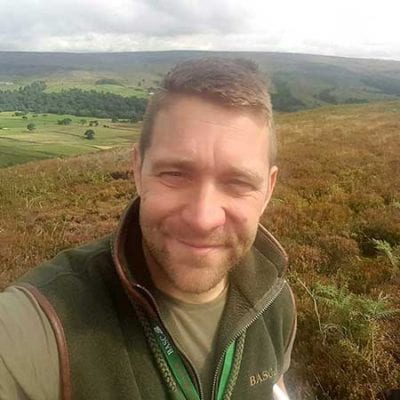Tackling wildfires at the landscape level

Gareth Dockerty
A new report into wildfire risks in the Peak District National Park should be the template for all parks, going forward, to help us protect them from wildfires, says Gareth Dockerty.
Following months of hard work and stakeholder engagement the Peak District National Park has published a landscape-scale report titled Wildfire Risk Assessment.
The report assesses the risks and mitigation measures, and it’s safe to say the findings are stark and a wake-up call to all landowners.
The BBC reported on the research saying, “wildfires pose a significant threat to national parks” and that “climate change means blazes could become so severe, they are beyond fire services’ capabilities to control”.
The facts in the report tells us that wildfire is now the biggest risk to upland peatlands and the Met Office are now predicting climate change will increase the likelihood and severity of wildfires in the future.
How do you quantify the risks of wildfire to peatlands across an entire landscape?
Leading international scientists and experts on the ground worked for months mapping the landscape with historical fire and weather data to create a wildfire risk analysis and comprehensive mitigation strategy.
The research identifies the highest risk areas and potential levels of devastation and sets out a path to improve wildlife prevention, pre-planning and response.
Importantly, the 150-page report advocates the use of a range of measures to reduce the risk of wildfire, including cool burning where appropriate, acknowledging that there is no one simple measure to implement.
What is the required action?
Land managers across the Peak District need to immediately start implementing the measures in active landscape scale. The key will be picking the most appropriate and effective management tools on a site-by-site basis and co-ordinating with neighbours’ actions.
The good news though is that we are not starting from scratch. Rewetting and moorland restoration are already underway across thousands of connected acres of moorland. Fuel loads are also being reduced through prescribed mowing and burning, and firebreaks are increasingly being utilised, too.
Synchronized educational initiatives are also being implemented to ensure visitors are both aware of the wildfire risks and how their actions could cause devastation.
Gamekeepers have the knowledge and equipment to respond quickly and effectively to wildfires. WhatsApp groups and quick action see them more fittingly described as fire wardens acting in the best interest of the public, when the fire risk is at its highest.
Different land managers may well choose to use management tools in different ways, the most important part is tackling the risk across the landscape. No land or stakeholder can be left behind or alone.
Encourage others to follow the process
This published document is only the beginning. As the Peak District begins to implement their recommendations, BASC is calling on the other National Parks and designated sites susceptible to wildfires to produce their own landscape assessments.
As stated in the executive summary of the report, “(…) wildfire is inevitable. It’s not if, but when (…)” and with increasing risk, we must all act together as one.
Attending a recent moorland workshop where the research was discussed, it was clear how important this subject is. All upland stakeholders were present and all recognised the gravity of the situation.
From landowners, public authorities, utility companies, NGOs and more, this Wildlife Risk Assessment has brought everyone together.
BASC, along with our partner shooting organisations and the shooting community, has a huge part to play in this process, and the skills to implement management that protects these habitats and carbon stores. We must embrace this challenge and work with others to protect our National Parks.
Want to read more blogs?
Head to our Offbeat pages here.
